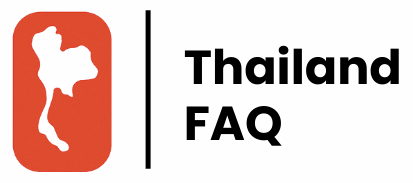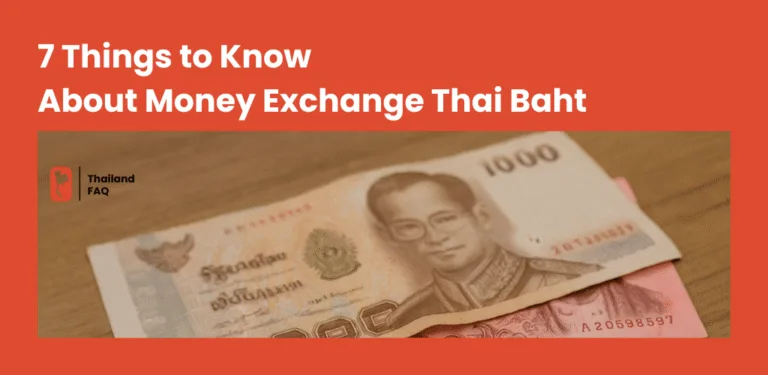There’s this moment, right after landing in Thailand, when you’re staring at an airport currency exchange booth and wondering, Should I just exchange here? Or wait until I get into the city? If that sounds familiar, you’re not alone. Figuring out how and where to handle a Money Exchange Thai Baht can be surprisingly tricky even for seasoned travelers.
Let’s walk through the main things to keep in mind. Nothing too technical, just practical advice. The kind you wish someone had told you ahead of time.

Understand the Thai Baht Before You Touch It
So first, a quick glance at the basics. The Thai Baht (THB) is the national currency, and you’ll be using it for just about everything taxis, food stalls, 7-Eleven runs (which, oddly enough, might become part of your daily routine).
There are coins and bills. Coins come in 1, 2, 5, and 10 baht. Bills start at 20 and go up to 1000 baht. Most people use bills, but don’t toss the coins they come in handy for BTS trains or temple donations.
One thing worth noting: some bills look similar in color, especially the 100 and 1000. It’s easy to mix them up at first. It happens.
Airport Exchanges Are… Okay, But Not Great
Let’s get this out of the way. If you’re exhausted after a long flight, exchanging a small amount of money at the airport isn’t the end of the world. You won’t get the best rate, but it’s convenient. That’s the trade-off.
Just avoid changing large amounts there. A few hundred baht to cover your first taxi or meal? Fine. But for anything more, hold off.
Insider Tip:
- Shop around for the best exchange rate. All booths have a display where they show the real-time exchange rates.
- Some exchange companies advertise “No Fees”. Which might appear to be true but they take their profit by using a unfavourable exchange rate
Best Exchange Rates? Look for Superrich and Friends
If you’re staying in Bangkok, you’ll hear about SuperRich both the orange and green versions. These aren’t banks but independent money changers that consistently offer some of the best rates.
Their main branches are usually near central transport hubs (like Ratchadamri or Pratunam). There are also competitors like Vasu and SIA Money Exchange that are just as good, sometimes better, depending on the day.
You’ll need your passport to exchange, so don’t forget that. And bring clean, crisp bills wrinkled or torn ones might get rejected.
Insider Tip:
- If you can’t find a SuperRich near you try to find a “family run exchange”. Often rates are very good and you have a chance to negotiate.
- Often you find exchange booths or shops in clusters. If you’re not happy with the offered exchange rate just look around in the area and there’s a high chance to find another shop or booth.
More info from SuperRich Thailand
Avoid Hotel and Shopping Mall Counters
It might seem convenient to exchange at your hotel front desk or at counters inside malls. But again, the rates are often significantly worse. In some cases, we’re talking 5-10% less than the actual mid-market rate.
It adds up fast.
It’s easy to lose the equivalent of a nice dinner or a couple of massages just because you didn’t walk an extra block. Harsh, but true.
ATMs in Thailand: A Double-Edged Sword
Using your foreign debit card at Thai ATMs can be convenient, especially if you’re not carrying much cash. But and this is important Thai banks charge a fixed withdrawal fee, usually around 220 THB per transaction.
That’s on top of whatever your home bank might charge. So unless your card refunds ATM fees, it’s not ideal for small withdrawals.
Insider Tip:
- If you go this route, withdraw the maximum amount allowed per transaction. It softens the sting.
- At Krungsri ATMs (the yellow ones) you can withdraw 30.000 THB, other ATMs only allow 20.000 or 25.000 THB
Digital Cards Like Wise or Revolut Work – To a Point
Many travelers now bring multi-currency cards like Wise or Revolut. These can give you solid exchange rates, especially for card payments or limited ATM withdrawals.
I’ve used both. Wise seems slightly more transparent, while Revolut offers perks like currency alerts or budgeting tools. But neither completely replaces local cash. Street vendors, rural guesthouses, and some taxis still prefer cash or only accept it.
So yeah, digital helps, but don’t rely on it exclusively.
Insider Tip:
- A lot of shops, especially in rural areas or at markets, don’t accept debit or credit cards. Make sure to always carry cash with you
Banking Alternatives in Thailand
Watch the Rate – But Also the Spread
You might see flashy signs advertising a great exchange rate, but here’s a small thing people miss: look at both the buying and selling rates. That difference the spread is where the money changers make their cut.
A tight spread usually signals a better deal for you.
For example, if the mid-market rate is 1 USD = 34 THB, a good exchange shop might offer you 34.9. A bad one? Maybe only 33.5. That’s nearly 5% worse. And it’s often hidden in plain sight.
Final Thoughts on Money Exchange Thai Baht
There’s no perfect way to handle Money Exchange Thai Baht, just smarter and less-smart ones. Personally, We suggest to:
- Bring some crisp USD or EUR as a backup.
- Use airport exchange for the bare minimum.
- Head to a place like SuperRich once you settle in.
- Use Wise for card payments, especially for booking hotels online.
But again, everyone travels differently. Some folks like having it all sorted before they land. Others wing it. That’s okay.
The important part is knowing your options. Thailand is affordable, but small exchange rate differences can quietly drain your travel budget. A little awareness goes a long way.
If you found this post helpful, you might also like:



